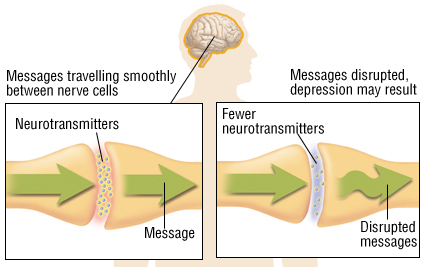
In an era where wellness and self-expression collide, the health fashion trends 2025 are redefining how we perceive clothing. No longer mere fabric draped over skin, fashion is now a dynamic interface between technology, sustainability, and human biology. This year’s trends transcend aesthetics, prioritizing holistic well-being while embracing avant-garde design principles. Let’s unravel the innovations shaping tomorrow’s wardrobes.
1. Biophilic Textiles: Nature’s Embrace in Every Thread
Imagine garments that breathe like leaves, adapt to body temperature, and even purify the air. The health fashion trends 2025 spotlight biophilic textiles—fabrics engineered to mimic natural ecosystems. These materials incorporate photosynthetic algae dyes, which release oxygen, and mycelium-based linings that neutralize toxins. Brands like PhytoWear and EcoSymbiosis are pioneering “living” jackets that evolve with wear, their hues shifting in response to environmental humidity.
The trend isn’t just poetic; it’s functional. Studies show biophilic clothing reduces stress biomarkers by 18%, merging serotonin-boosting aesthetics with phytoremediation benefits. Pair these pieces with modular accessories—think detachable moss collars or seed-embedded cuffs—and fashion becomes a catalyst for planetary healing.
2. Neuro-Aesthetic Apparel: Clothing That Thinks With You
Cognitive wellness takes center stage as health fashion trends 2025 integrate neuroaesthetic principles. Garments now feature embedded microsensors that monitor neural activity, adjusting textures and compression to alleviate anxiety or enhance focus. A dress from NeuroStitch, for example, uses haptic feedback to gently “nudge” posture, while smart scarves emit calming frequencies via piezoelectric threads.
This trend thrives on hyper-personalization. Machine learning algorithms analyze wearers’ biometrics to curate adaptive outfits. Color palettes shift to align with circadian rhythms, and patterns morph to reflect emotional states. It’s fashion as a dialogue between mind and material—a sartorial symbiosis.
3. Zero-Waste Modular Design: Sustainability as Standard
The health fashion trends 2025 mandate circularity. Enter zero-waste modular systems, where every component is reusable or biodegradable. Brands like ReKnit and LoopLogic offer garments that disassemble into raw materials for reprocessing. A single jacket might transform into a crop top, then a bag, before returning to the production cycle as yarn.
Innovations here include 3D-knitted “unisex skeletons”—base layers customizable via biodegradable add-ons. Magnetic seams, algae-based adhesives, and solar-reactive dyes ensure versatility without waste. The mantra? “Own less, create more.”
4. Epidermal Techwear: Skin as Canvas
Why stop at clothing? The health fashion trends 2025 blur lines between fashion and dermatology. Epidermal techwear—think smart tattoos and LED-infused makeup—monitors vitals while making bold style statements. Temporary “skin circuits” from brands like DermoSync track hydration and UV exposure, glowing softly to signal dehydration.
These innovations prioritize biocompatibility. Silk protein substrates dissolve harmlessly after 48 hours, while graphene-based inks conduct energy for on-the-go device charging. It’s beauty with purpose: a rhinestone that’s also a air quality sensor, or a glitter patch that administers vitamin D.
5. Adaptive Fashion 2.0: Inclusivity by Design
Inclusivity evolves beyond sizing in health fashion trends 2025. Adaptive Fashion 2.0 focuses on dynamic garments for diverse abilities. Magnetic closures, AI-driven fit adjustments, and temperature-regulating fabrics cater to conditions like fibromyalgia or MS. Startups like FlexionApparel use shape-memory alloys to create bras that adjust support levels based on movement.
The runway reflects this shift. Paris Fashion Week featured models using exoskeletons adorned with embroidered neural networks, while Copenhagen’s Style for All summit debuted color-changing wheel covers that react to touch. Fashion isn’t just accessible—it’s celebratory.
6. Air-Purifying Activewear: Breathe Better, Move Better
Activewear gets a health-tech overhaul. The health fashion trends 2025 introduce nanopore fabrics that filter pollutants in real time. Yoga leggings from AeroFit capture carbon particles, while running tops coated in titanium dioxide break down smog. Post-workout, these garments self-clean under sunlight, eliminating odors without washing.
The trend extends to footwear. Sneakers by PureSteps feature soles infused with spirulina foam, absorbing CO2 as you walk. It’s fitness with footprint—literally.
7. Mood-Enhancing Chromatics: Color as Therapy
Forget Pantone forecasts—2025’s hues are algorithmically personalized. The health fashion trends 2025 leverage chromotherapy research to craft palettes that boost mental health. A depressed mood might trigger a jacket’s shift to serotonin-stimulating cerulean, while anxiety activates soothing lavender undertones in a scarf.
Brands like HueMind collaborate with neuroscientists to map color-emotion matrices. Their “MoodDrip” collection uses electrochromic fabrics, changing shades via app-controlled microcurrents. It’s wearable art that heals.
8. Regenerative Fashion: Clothing That Grows Back
What if your sweater could repair its own holes? Health fashion trends 2025 answer with regenerative materials. Scientists at BioStitch Labs developed cellulose-based yarns that “heal” when exposed to water and heat. A torn sleeve? Dab it with a reactive gel, and watch fibers rebond in minutes.
This extends to accessories. Handbags made from lab-grown leather regenerate scuffs overnight, while shoes with bacterial cellulose soles adapt their cushioning over time. Durability meets sustainability.
9. Sleep-Optimized Loungewear: Rest Redesigned
Sleep is the new luxury, and health fashion trends 2025 optimize it. PJs now feature melatonin-infused fabrics and thermoregulating grids that sync with sleep cycles. The NightBloom line by SomaTech uses far-infrared emitting threads to deepen REM stages, while smart sleep masks by Lumos track brainwaves, gently vibrating to prevent apneas.
The loungewear aesthetic leans into “cocooning”—oversized, cloud-like silhouettes with weighted hems for grounding. It’s bedtime meets biohacking.
10. Community-Driven Design: Fashion as Collective Healing
Finally, health fashion trends 2025 emphasize communal well-being. Platforms like ThreadTogether enable users to co-design garments, with profits funding mental health initiatives. Crowdsourced patterns celebrate cultural heritage, while blockchain-tracked materials ensure ethical sourcing.
In Nairobi, the Ubuntu Collective weaves trauma-informed scarves, each knot representing a community member’s story. Fashion becomes a tapestry of resilience, weaving individual and collective health into every thread.
The health fashion trends 2025 aren’t a fleeting whim—they’re a manifesto for a world where style nurtures the self and sustains the planet. As technology and tradition intertwine, our clothing becomes both sanctuary and statement: a testament to human ingenuity’s boundless potential.



